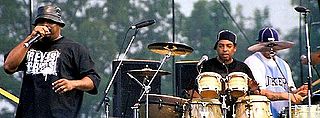
Cypress Hill is an American hip hop group from South Gate, California, formed in 1988. They have sold over 20 million albums worldwide, and they have obtained multi-platinum and platinum certifications. The group has been critically acclaimed for their first five albums. They are considered to be among the main progenitors of West Coast hip hop and 1990s hip hop. All of the group members advocate for medical and recreational use of cannabis in the United States. In 2019, Cypress Hill became the first hip hop group to have a star on the Hollywood Walk of Fame.

The Eminem Show is the fourth studio album by the American rapper Eminem, released on May 26, 2002, through Aftermath Entertainment, Shady Records, and Interscope Records. The album saw Eminem take a predominant production role, including the album's three hit singles: "Without Me", "Cleanin' Out My Closet", and "Sing for the Moment". Guest appearances include Obie Trice, D12, Dr. Dre, Nate Dogg, Dina Rae, and Eminem's daughter, Hailie Jade.

Voodoo is the second studio album by the American singer, songwriter, and multi-instrumentalist D'Angelo, released on January 25, 2000, through Virgin Records. D'Angelo recorded the album during 1997 and 1999 at Electric Lady Studios in New York City, with an extensive line-up of musicians associated with the Soulquarians musical collective. Produced primarily by the singer, Voodoo features a loose, groove-based funk sound and serves as a departure from the more conventional song structure of his debut album, Brown Sugar (1995). Its lyrics explore themes of spirituality, love, sexuality, maturation, and fatherhood.

This article is an overview of the major events and trends in popular music in the 2000s.

Songs in A Minor is the debut studio album by American singer and songwriter Alicia Keys, released on June 12, 2001, by J Records.
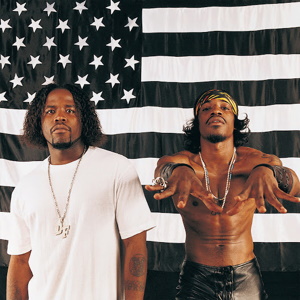
Stankonia is the fourth studio album by the American hip hop duo Outkast. It was released on October 31, 2000, by LaFace Records and Arista Records. The album was recorded in the duo's recently purchased Atlanta recording facility Stankonia Studios, which allowed for fewer time and recording constraints, and featured production work from Earthtone III and longtime collaborators Organized Noize.

Aaliyah is the third and final studio album by American R&B singer Aaliyah. It was released on July 7, 2001, by Blackground Records and Virgin Records. Because of its packaging design, it is also known as "The Red Album". Aaliyah started to work on the album in 1998, but rescheduled its recording around her developing film career. She resumed recording in 2000 at Sing Sing Studios in Australia, where she shot her role for the 2002 film Queen of the Damned during the day and recorded songs at night. Additional recording took place at Manhattan Center and Sony Music Studios in New York and Westlake Recording Studios in Los Angeles, among other locations. Through her recording contract with Blackground, the singer worked primarily with the record label's in-house crew of writers and producers, including Bud'da, J. Dub, Rapture, and Eric Seats, as well as longtime collaborator Timbaland.

Brown Sugar is the debut studio album by American singer, songwriter, and multi-instrumentalist D'Angelo, released on July 3, 1995, through EMI. The album was recorded during 1994 and 1995 in sessions at Battery Studios and RPM Studios in New York City and at the Pookie Lab in Sacramento. Its production, instrumentation, arrangements, and songwriting were primarily handled by D'Angelo, who employed both vintage recording equipment and modern electronic devices. The songs feature earnest lyrics about love and romance, set against a fusion of contemporary R&B and traditional soul music with elements of funk, quiet storm, and hip hop music.

Shareese Renée Ballard, better known by her stage name Res, is an American singer from Philadelphia, Pennsylvania. Her musical style is a blend of indie pop, soul, and rock.
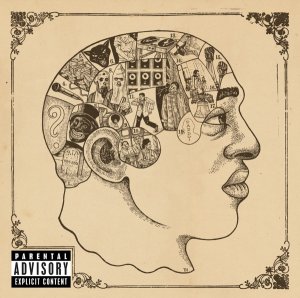
Phrenology is the fifth studio album by American hip hop band the Roots, released on November 26, 2002, by MCA Records. Recording sessions for the album took place during June 2000 to September 2002 at Electric Lady Studios in New York. It was primarily produced by members of the band and features contributions from hip hop and neo soul artists such as Cody ChesnuTT, Musiq Soulchild, Talib Kweli, and Jill Scott.

Mary is the fourth studio album by American singer Mary J. Blige, released August 17, 1999, on MCA Records. The album debuted at number two on the Billboard 200 chart, selling 239,000 copies in its first week. It spent 57 weeks on the chart and produced five charting singles. Upon its release, Mary received acclaim from music critics. It has been certified double platinum by the Recording Industry Association of America for sales of two million units in the United States.

Destiny's Child is the debut studio album by American R&B group of the same name, released by Ruffhouse, Columbia Records and Music World Entertainment on February 17, 1998. It features the singles "No, No, No" and "With Me", both of which preceded the album. "Killing Time" was also featured in "Men in Black: The Album" and released as a promotional single in 1997. Prior to release, the album was set to be called "Bridges". The album spent twenty six weeks on the US Billboard 200 chart and peaked at number sixty-seven. To date the album has sold a total of 831,000 copies in America. In the United Kingdom, it reached the top fifty, peaking at number forty-five. It was re-packaged and re-released in several countries after the success of the follow-up album, The Writing's on the Wall (1999). The album was met with generally favorable reviews from music critics, including AllMusic and Rolling Stone, and won a Soul Train Lady of Soul Award for Best R&B/Soul Album of the Year.
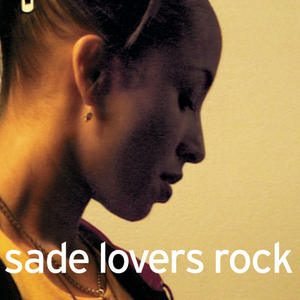
Lovers Rock is the fifth studio album by English band Sade, released on 13 November 2000 by Epic Records. The album was titled after a style of reggae music known as lovers rock, noted for its romantic sound and content, which frontwoman Sade Adu listened to in her youth. Lovers Rock was seen as a departure from the band's previous use of jazz elements, opting instead for a wider use of musical elements from soul music, R&B, soft rock, folk music, dub, reggae, neo soul and lovers rock. The album's production has been characterised as spare, with simple arrangements and reggae flourishes. A concept album, the lyrics focus on both the positive and the negative sides of love; the album's lyrical content also touches upon political themes.

Kamaal the Abstract is the third studio album by American hip hop artist Q-Tip, released September 15, 2009, on Battery Records. Recorded in 2001, the album is a departure from his solo debut album Amplified (1999). Kamaal the Abstract is an eclectic album that features Q-Tip rapping, singing, and exploring his jazz influences. The album contains introspective and life-related lyrical themes.
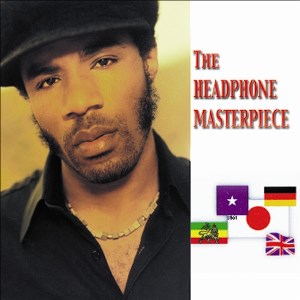
The Headphone Masterpiece is the debut album by American singer-songwriter and multi-instrumentalist Cody Chesnutt, released in 2002. It was recorded in his home bedroom with a 4-track recorder and Chesnutt playing guitar, bass, keyboard, and the organ. A 36-song double album, The Headphone Masterpiece features neo soul and lo-fi music, and distorted, overdubbed production. It was written and arranged by Chesnutt, whose mix of ironic and sincere lyrics reflect on personal experiences such as falling in love with his wife and reconciling his love for rock and roll with the drawbacks to the rock lifestyle.

Mahogany Soul is the second studio album by American singer Angie Stone. It was first released in the United States on October 16, 2001, by J Records. In the US, the album sold 71,000 copies in its first week of release. The album spawned five singles: "Brotha", "Brotha Part II", "Wish I Didn't Miss You", "More Than a Woman", and "Bottles & Cans".
"I Care 4 U" is a song recorded by American singer Aaliyah. Written by Missy Elliott and Timbaland, the song was originally recorded for Aaliyah's second studio album One in a Million (1996), but the recording was shelved. It was re-recorded in 2000 for Aaliyah (2001). A neo soul ballad, "I Care 4 U" features beatboxing, an electric piano and multi-tracked vocals.

The Mix-Up is the seventh studio album by the American hip hop group Beastie Boys, released on June 26, 2007. The album consists entirely of instrumental performances and won a Grammy Award for Best Pop Instrumental Album.
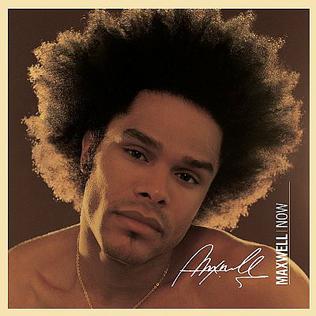
Now is the third studio album by American R&B singer Maxwell. It was released on August 14, 2001, by Columbia Records. Following the lukewarm critical reception of his 1998 record Embrya, Maxwell pursued a different direction while recording Now, abandoning the conceptual style of his previous albums.

Airtight's Revenge is the third studio album by American singer-songwriter Bilal. It was released on September 14, 2010, by the independent record label Plug Research, his first album for the label.


















